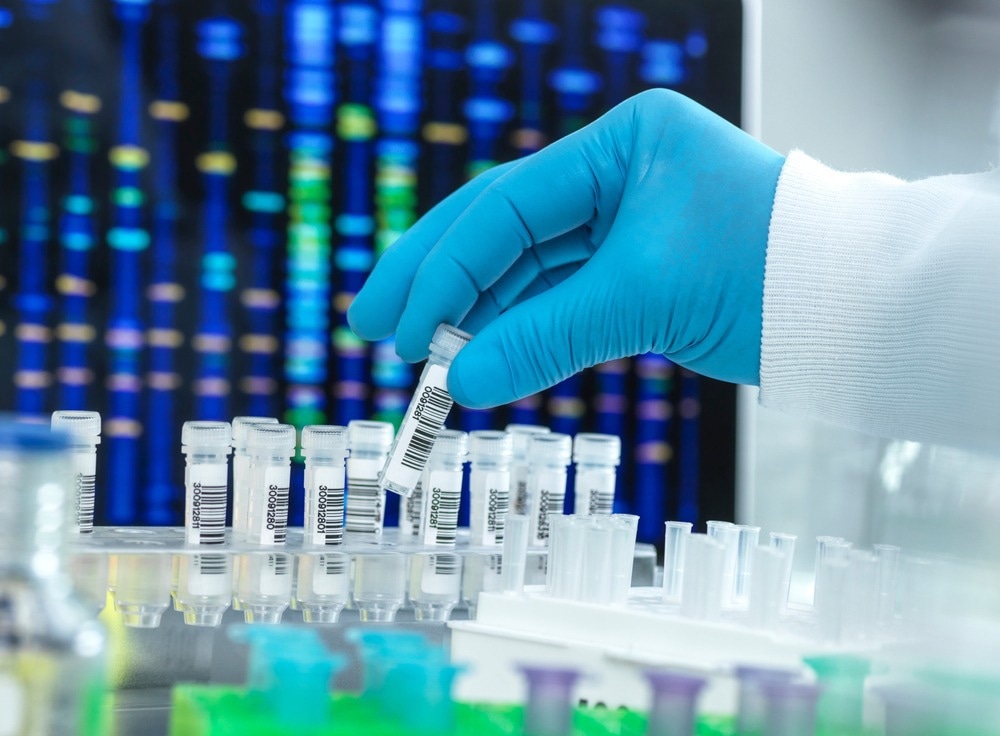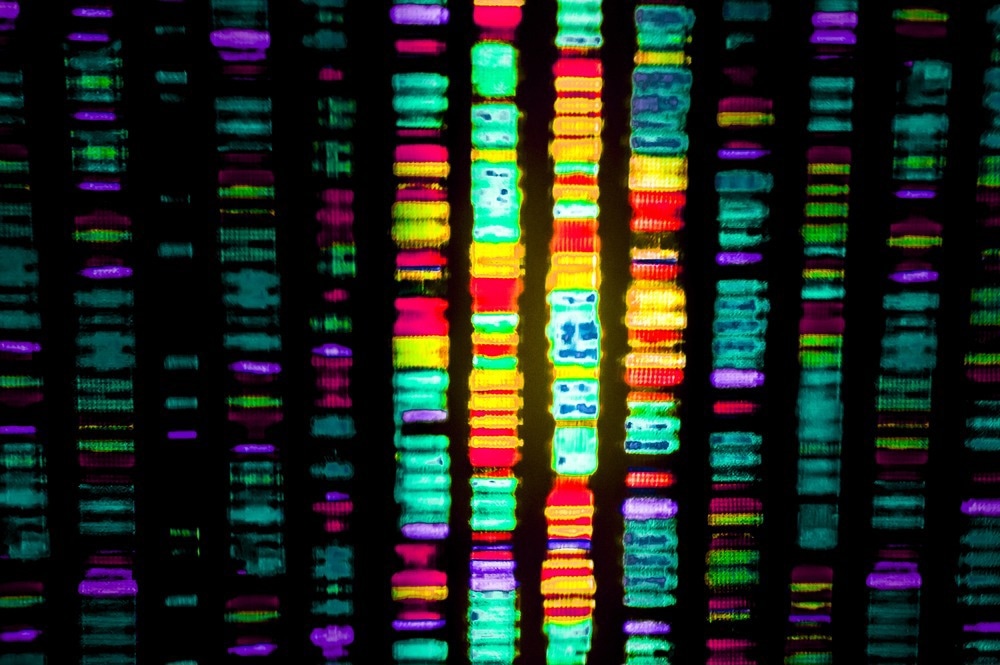Genotyping and DNA sequencing are similar in some aspects, but they are functionally different. Genotyping involves using unrelated nucleotide sequences scattered across different locations within the genome, while DNA sequencing aims to shed light on the genome as a whole and gives more information on the meaning of nucleotide sequences.
What is the Difference Between DNA Sequencing and Genotyping?
What is Genotyping?
To understand what genotyping means, first, we have to know the meaning of genotype, which can be defined as a DNA sequence specified by the linear order of its nucleotides (the building block of nucleic acids) located at a specific site in the genome (i.e., a locus).
Genotypes may differ between individuals in the same population or even the same family, and they can be compared based on sequence alignment, a bioinformatic analysis that may include target reference sequences. Genotyping is fundamental to identifying different genetic variants for classification purposes and recognizing genotypes associated with a particular phenotype.
What is Sequencing?
From a technical point of view, the term 'sequencing' makes reference to the procedure of reading the specific order of a sequence of nucleic acid (either DNA or RNA) or protein. Moreover, DNA sequencing involves all methods used in molecular biology to unravel the order of nucleotides in the DNA sequence that contains an organism's genetic material or genome. This procedure (DNA sequencing) has a wide range of applications in life sciences disciplines such as biochemistry, biotechnology, epidemiology, and medicine.
Genotyping versus DNA Sequencing: Different but Similar
Genotyping and DNA sequencing are functionally similar in that both aim to decipher the nucleotide sequence's linear order. Nonetheless, they are distinct since the main objective in genotyping is to determine the linear order of nucleotides in a particular DNA fragment, while DNA sequencing may involve reading entire genome sequences, thereby providing more information about the genetic material contained in an organism's cell. In consequence, DNA sequencing is not only to make phenotype-genotype associations or purely tag purposes, but it may also offer useful information on unidentified genotypes.
Whole genome sequencing refers to the technique capable of determining the complete nucleotide sequence of whole genomes, a fundamental step in meta-analysis and high-scale identification of genetic variants associated with a phenotype, single nucleotide polymorphisms (SNPs), etc.

Image Credit: Cavan-Images/Shutterstock.com
Genotyping Steps
Genotyping is a routing technique in molecular biology laboratories and has a series of sequential steps:
- DNA extraction uses physical and chemical processes to separate the genetic material (DNA) from other cellular components. This procedure (DNA extraction) may involve different sample treatments, including phenol-chloroform, salting out prior to proteinase K, silica–gel membranes, etc.
- Polymerase chain reaction (PCR) aims to amplify DNA fragments to be used for genotyping and/or sequencing. The PCR procedure generates millions of copies of a specific segment of DNA by flanking the target sequence of interest.
- Electrophoresis is based on an electric current capable of separating biomolecules depending on their charges and size. This technique (electrophoresis) separates DNA fragments that migrate in an agarose gel depending on their molecular sizes.
- DNA visualization under ultraviolet (UV) to identify genotypes as bands.
The First Generation of Sequencing
The first generation of sequencing methods included Maxam–Gilbert and Sanger sequencing:
- Maxam–Gilbert sequencing was developed by Allan Maxam and Walter Gilbert (1976). This technique consists of non-enzymatic modifications of specific nucleobases and subsequent cleavage of the DNA sequence.
- Sanger sequencing is based on the selective incorporation of chain-terminating dideoxy nucleotides, followed by DNA electrophoresis.
Sequencing is Multipurpose
The term 'sequencing' does not necessarily involve determining the linear order of nucleotides of a given DNA fragment. Sequencing methods include:
- RNA sequencing, commonly known as RNA-Seq, refers to the techniques to sequence the entire transcriptome, i.e., the whole RNA content derived from transcription, in a cell.
- DNA methylation sequencing refers to identifying DNA methylation marks (generally by bisulfite treatment), which enables the determination of methylated cytosine bases in a given nucleotide sequence context or genomic locus. DNA methylation sequencing is very useful for determining how DNA epigenetic pattern (i.e., the presence of methyl CH₃ groups in the DNA molecule) is associated with gene expression.
- High-Throughput Sequencing technologies are based on next-generation sequencing (NGS) platforms such as Roche/454 Pyrosequencing, Illumina, and ABI/SOLiD. These NGS methods determine the order of nucleotides in both DNA (genomes) and RNA (transcriptomes).

Image Credit: Gio.tto/Shutterstock.com
The Convergence of Genotyping and Sequencing
NGS technologies have provided pivotal data to boost genomic research toward exciting, unprecedented progress. Nowadays, we daily obtain cost-effective high-throughput genotyping data to test a particular genome for different molecular markers (a technique known as genotyping by sequencing), which can be used to develop a wide range of genomic analyses such as, for example, association mapping, population studies, detection of single-nucleotide variants (SNVs) in personalized medicine, etc. In genomics, the contemporary period will likely be remembered as the inflection point in which both sequencing and genotyping technologies converged to develop high-throughput sequencing platforms.
Sources:
- Barros-Silva, Daniela, et al. "Profiling DNA methylation-based on next-generation sequencing approaches: new insights and clinical applications." Genes 9.9 (2018): 429. DOI: https://doi.org/10.3390/genes9090429
- Boers, Stefan A., Ruud Jansen, and John P. Hays. "Understanding and overcoming the pitfalls and biases of next-generation sequencing (NGS) methods for use in the routine clinical microbiological diagnostic laboratory." European Journal of Clinical Microbiology & Infectious Diseases 38.6 (2019): 1059-1070. DOI: https://doi.org/10.1007/s10096-019-03520-3
- Guimaraes, Ana MS, and Cristina K. Zimpel. "Mycobacterium bovis: from genotyping to genome sequencing." Microorganisms 8.5 (2020): 667. DOI: https://doi.org/10.3390/microorganisms8050667
- Haynes, Edward, et al. "The future of NGS (Next Generation Sequencing) analysis in testing food authenticity." Food Control 101 (2019): 134-143. DOI: https://doi.org/10.1016/j.foodcont.2019.02.010
- Masset, Heleen, et al. "Single-cell genome-wide concurrent haplotyping and copy-number profiling through genotyping-by-sequencing." Nucleic acids research 50.11 (2022): e63-e63. DOI: https://doi.org/10.1093/nar/gkac134
- Wang, Nan, et al. "Applications of genotyping-by-sequencing (GBS) in maize genetics and breeding." Scientific Reports 10.1 (2020): 1-12. DOI: https://doi.org/10.1038/s41598-020-73321-8
Further Reading
Last Updated: Jan 13, 2023